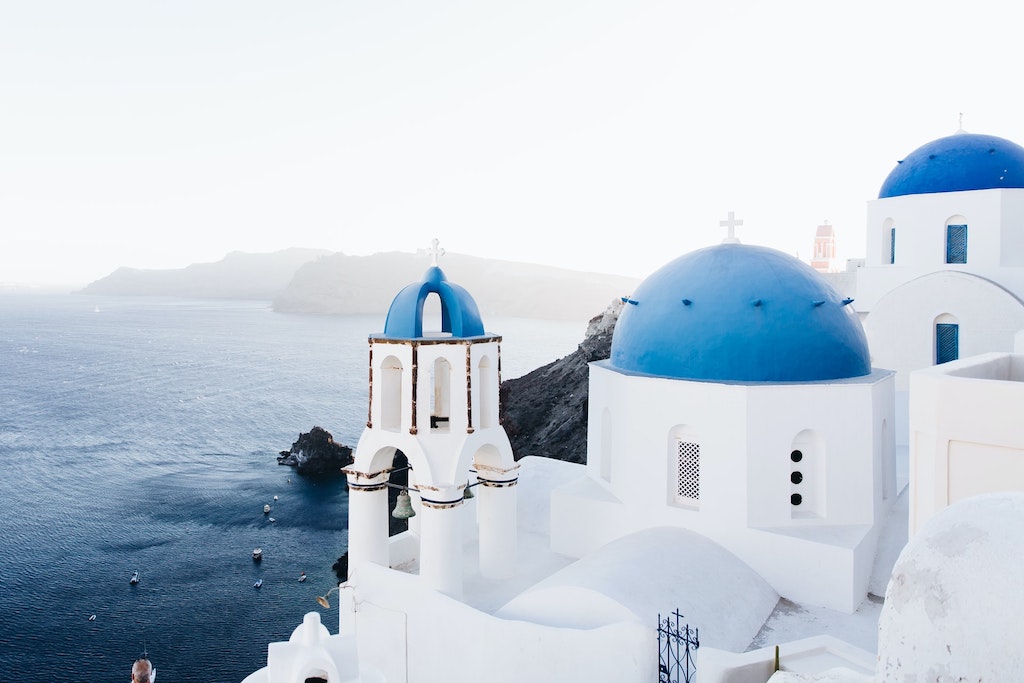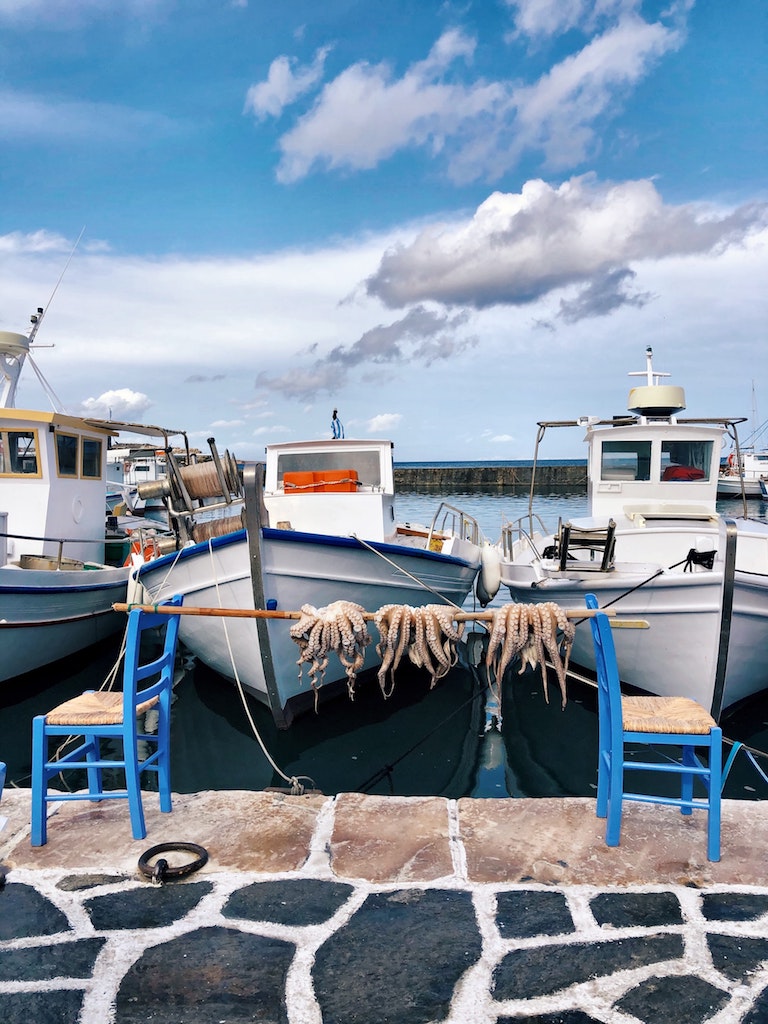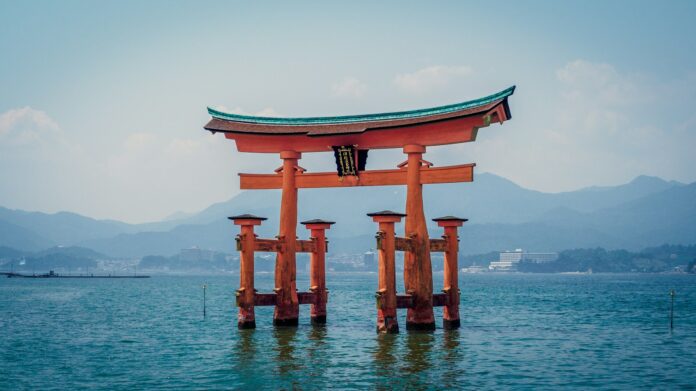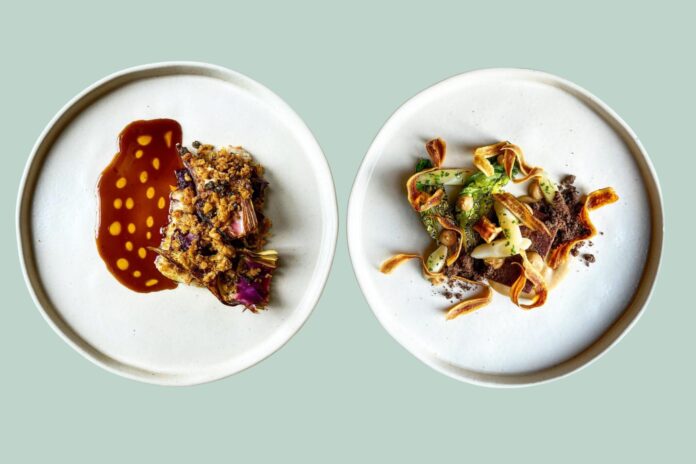Languorous lunches of mezze that last into the night, swimming in the cool cobalt-blue sea, the feeling of hot sand between your toes while you listen to someone strumming the bouzouki. Plates smashing and shots of ouzo. Sounds like Greece to us.
Unfortunately, many of us are forgoing our Greek getaway this year. According to the BBC, people are putting off their holidays due to uncertainty over international travel. And who can blame them? Red, amber and green lists be damned, this thing isn’t black and white, and there’s still a whole load of uncertainty hanging over future travel plans, full stop.
If island hopping across Greece’s captivating cluster of islands adrift in the Aegean sea isn’t on your agenda right now (for environmental and/or travel restriction reasons), then transport yourself there with these; our 5 ways to go to Greece without leaving the house.
CHANNEL THE DECOR OF A GREEK VILLA
If you want to bring the essence of Greece to your home, then start by channeling the decor of a gleaming whitewashed Greek villa overlooking the twinkling Ionian Sea. Where to start? With the colour scheme, of course.
The first thing that comes to mind when thinking of Greece is often the colour combination of blue against crisp white. Not only are blue and white the colours of the national flag, the two colours are also thought to symbolise Greece’s sky and sea. The combination is also reminiscent of those whitewashed buildings with blue trimmings found in the Cyclades.
Incorporating bold blues and crisps whites through home accessories like throws, cushions and vases is a simple way to include these emblematic Grecian colours into your home. For dramatic impact, consider painting your walls white and window frames bright blue.

A common motif found in Grecian interior design is the complex ‘Greek Meander’ pattern (also known as ‘Greek Lines’ or the ‘Greek key’). The Greek Villas, who offer villas in Mykonos to rent, tell us that this pattern is a physical representation of the labyrinth that imprisoned the Minotaur. It also symbolises infinity and unity.
Consider incorporating this geometric pattern into your home through soft furnishings like cushions, throws, curtains, doormats and rugs. Meander mosaic tiles in the bathroom or used as a kitchen backsplash are a wonderfully functional way of using this design motif. You could also consider a tiled centrepiece in the middle of the floor; think of it as a permanent rug, but made from gorgeous, hard tiles instead.

Stone walls are another standout feature in many Greek homes as they serve to keep rooms cool in the sweltering heat. Adorning your walls with faux stone wallpaper is an easy way to bring this very Grecian effect to your home without the need for any messy remodelling.
Adding an indoor olive tree or two is vital for any Greek-inspired space, too. The olive tree is one of the most iconic trees in Greek culture. In Greek mythology, Athena won the patronage of Athens from Poseidon with the gift of an olive tree because it is a symbol of peace. While olive trees are native to the Mediterranean, they do grow successfully in the UK. Choose a Kalamata olive tree which is a traditional Greek varietal.
Read: 5 garden ideas for bringing our favourite destinations home this year
WATCH THESE
Watching television programs with Greece set as the backdrop is a surefire way to transport you there, virtually speaking of course. Perhaps our favourite virtual trip to Greece is with Steve Coogan and Rob Brydon on their show The Trip. Enjoying a vicarious holiday with those two as your travel companions is just plain fun. The uninitiated will also learn a lot about Greek mythology as the pair follow in Homer’s Odyssey while indulging in some of the very best gastronomy Greece has to offer.
Here we go again! Of course, we had to mention Mamma Mia. Though the word “Greece” is only mentioned a mere once in the movie (you can fact check us on that) and the depiction of the movie’s Greek characters is questionable, the movie does have the power to transport you to Greece – plus it’s done wonders for the countries tourism. We also loved the scenes of metacomedy in The Trip that occurred on the set of Mammia Mia, when Coogan and Brydon revisited some of the tavernas and sandy stretches which Pierce Brosnan, Meryl Streep et al sang, danced and made merry.
For another singsong, you could join Cliff Richard on his ‘Summer Holiday’, too. In the film, Cliff plays a bus mechanic who borrows a double-decker from London Transport. He converts it into a travelling hotel and drives it to Athens, stopping to perform song and dance routines along the way.
There are also plenty of travel programs where celebrity cooks journey to Greece in search of good food. Check out Rick Stein’s ‘Venice to Istanbul‘ series – episode 4 takes Rick to northern Greece and the historic city of Ioannina and in Episode 5 he travels to the Greek Peloponnese and samples dishes like rooster stew containing a traditional Greek pasta named hilopites and served with mizithra cheese.

READ THESE….
We’re not going to lie and say we’ve read all of these books. Instead, we’ve turned to the Guardian to advise us on the best books set in Greece. Their article on “10 of the best novels set in Greece – that will take you there” includes…
- The Odyssey by Homer
- The King Must Die by Mary Renault
- Captain Corelli’s Mandolin by Louis de Bernières
- Little Infamies by Panos Karnezis
- My Family and Other Animals by Gerald Durrell
- Uncle Petros and Goldbach’s Conjecture by Apostolos Doxiadis Freedom and Death by Nikos Kazantzakis The Dark Labyrinth by Lawrence Durrell
- The Names by Don DeLillo
- Atticus the Storyteller’s 100 Greek Myths by Lucy Coats and Anthony Lewis
COOK THE FOOD
Rice-stuffed vine leaves and juicy chicken souvlaki, a plate of succulent squid and a late-night gyros – our mouths are watering just thinking about the food of Greece. Indeed, you don’t run a civilization for nearly four thousand years without learning a thing or two about food, and Greek food is downright delicious. To travel to Greece is to eat the food, so experience Greece at home by cooking the country’s cuisine.
One of the most rewarding aspects of travelling through Greece is discovering the thrilling diversity of food on offer, with each place specialising in a different plate, utterly unique to (and inspired by) their surroundings.
Indeed, each region and even each island has its own local larder and culinary specialities. Explore these regional specialities with the help of Greece the Cookbook by Vefa Alexiadou. It’s a comprehensive bible of Greek Gastronomy and well worth a look.
Or, you could order in. In many of the world’s urban centres, you’re never far from a delicious Greek restaurant. Our favourite grab-and-go speciality from the country is undoubtedly gyros, which is
Or, you could order in. In many of the world’s urban centres, you’re never far from a delicious Greek restaurant. Our favourite grab-and-go speciality from the country is undoubtedly gyros, arguably Greece’s favourite fast food.
Similar to shawarma, kebab or even tacos al pastor, chefs slice lamb or chicken off a vertical rotating spit (gyros translates as ‘turn’) and stuff slices into warm pita. Finally, it’s topped with tzatziki. Simply google something along the lines of ‘gyro food near me‘ or ‘gyros near me’, and dive in!

DRINK THE WINE
You can’t cook and enjoy a Greek meal without enjoying a glass or two of wine from the country. Here at IDEAL, we’re fans of Assyrtiko from Santorini which is probably the country’s top wine. It contains volcanic mineral notes and the intoxicating aroma of citrus fruit and pairs brilliantly with fish and shellfish. Also from Santorini, the internationally acclaimed Vinsanto, a naturally sweet, sun-dried dessert wine, is a favourite of ours, too. It tastes like raisins and chocolate and pairs beautifully with baklava or a kataïfi.
Moschofilero, a white from the Peloponnese, is a dry and bold wine which works well with a Greek salad. If you’re after a red then try Moschomavro or Xinomavro which both hail from Macedonia. They pair well with the tomato-based stews that are famous in the north of the country.
WHAT TO LISTEN TO
While enjoying your Greek inspired feast, you’ll of course need to listen to a soundtrack of the country’s music.
There are four main types of Greek music; Dimotiko, Kantada, Nisiotika and Rembetika. Dimotiko are folk songs and Kantada, which originated from Kefalonia, is a style of romantic serenade music sung with three male voices in a chorus and accompanied by a bouzouki guitar. Nisiotika are songs of the Greek islands known for their gentle rhythm, and last but not least, Rembetika music is Greece’s answer to the blues. Check out Markos Vamvakaris, who is known as the “patriarch of the rebetiko” for a glimpse into this intoxicating music.
For more inspiration on what to listen to, the guys over at the Culture Trip have pulled together this handy list of Greece’s best love songs which includes Mi Mou Ksanafygeis Pia by Sotiria Bellou, To agalma by Giannis Poulopoulos and Stalia-stalia by Marinella…three of our favourites, as it happens!





